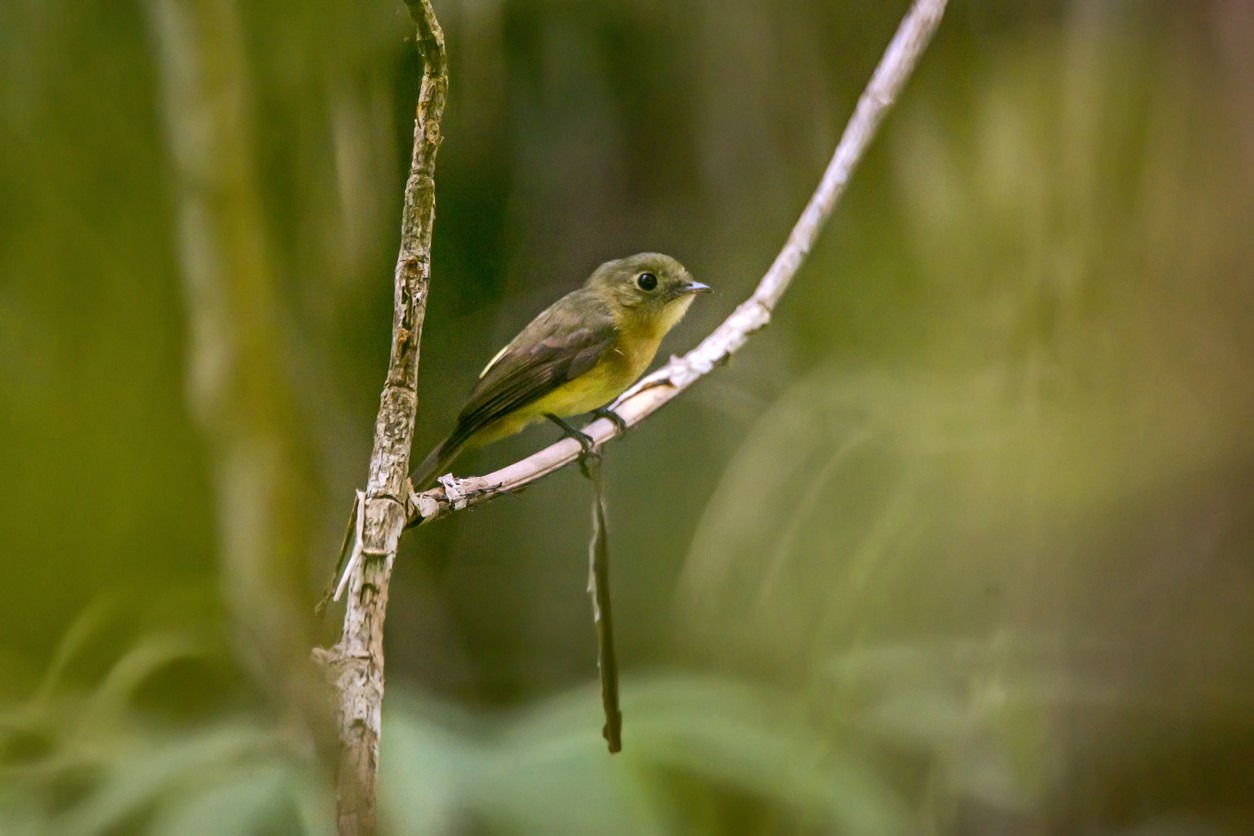Black-tailed Flycatcher
A species of Myiobius Flycatchers Scientific name : Myiobius atricaudus Genus : Myiobius Flycatchers
Black-tailed Flycatcher, A species of Myiobius Flycatchers
Botanical name: Myiobius atricaudus
Genus: Myiobius Flycatchers
Content
Description General Info

Description
The black-tailed myiobius closely resembles the whiskered myiobius (M. barbatus) and the sulphur-rumped myiobius (M. sulphureipygius) in appearance, with olive upper parts and a yellow rump. The underparts differ in being buff rather than tawny or greyish-olive, but birds living in eastern Brazil tend to have yellowish or yellowish-buff underparts. Another distinguishing feature is the location in which the bird is seen. The black-tailed myobius haunts woodland edges and secondary forests and is less active or acrobatic than the other two species; it is found at altitudes up to 1,400 m (4,600 ft). 
Size
13 cm
Nest Placement
Tree
Feeding Habits
Black-tailed Flycatcher primarily consumes arthropods and insects, captured through adept aerial foraging. Distinguished by agile flight maneuvers, black-tailed Flycatcher has a specialized diet reflecting a preference for flying insects, a trait that underscores its unique hunting technique typically performed at twilight hours.
Habitat
The black-tailed Flycatcher typically resides in the lower growth of dry to humid forests, including lighter woodlands, shrubby second growths, and forest borders particularly near bodies of water. Broadly distributed through tropical regions, black-tailed Flycatcher favor habitats like Amazonian várzea forests and are also found in various altitudes ranging from sea level to 1400 meters, depending on the region.
Dite type
Insectivorous
General Info
Feeding Habits
Bird food type
Distribution Area
The species has a patchy distribution in tropical Central and South America. It is present in Costa Rica, Panama, Colombia, Venezuela, Ecuador, Peru (on both sides of the Andes) and large parts of Brazil. Where their ranges overlap, it is generally found in drier habitats than the whiskered myiobius (M. barbatus), and at higher elevations. It generally frequents forest verges and secondary growth, often near water, whereas the whiskered myiobius prefers the interior of forests. 
Species Status
Destruction of the Amazon rainforest is reducing the area of suitable habitat for this bird and its numbers are thought to be in decline. It is an uncommon species with a patchy distribution, nevertheless, it has a very wide range and the total population size is likely to be large; as a result, the International Union for Conservation of Nature has classified it as being of "least concern. 


Scientific Classification
Phylum
Chordates Class
Birds Order
Perching birds Family
Tyrant flycatchers Genus
Myiobius Flycatchers Species
Black-tailed Flycatcher